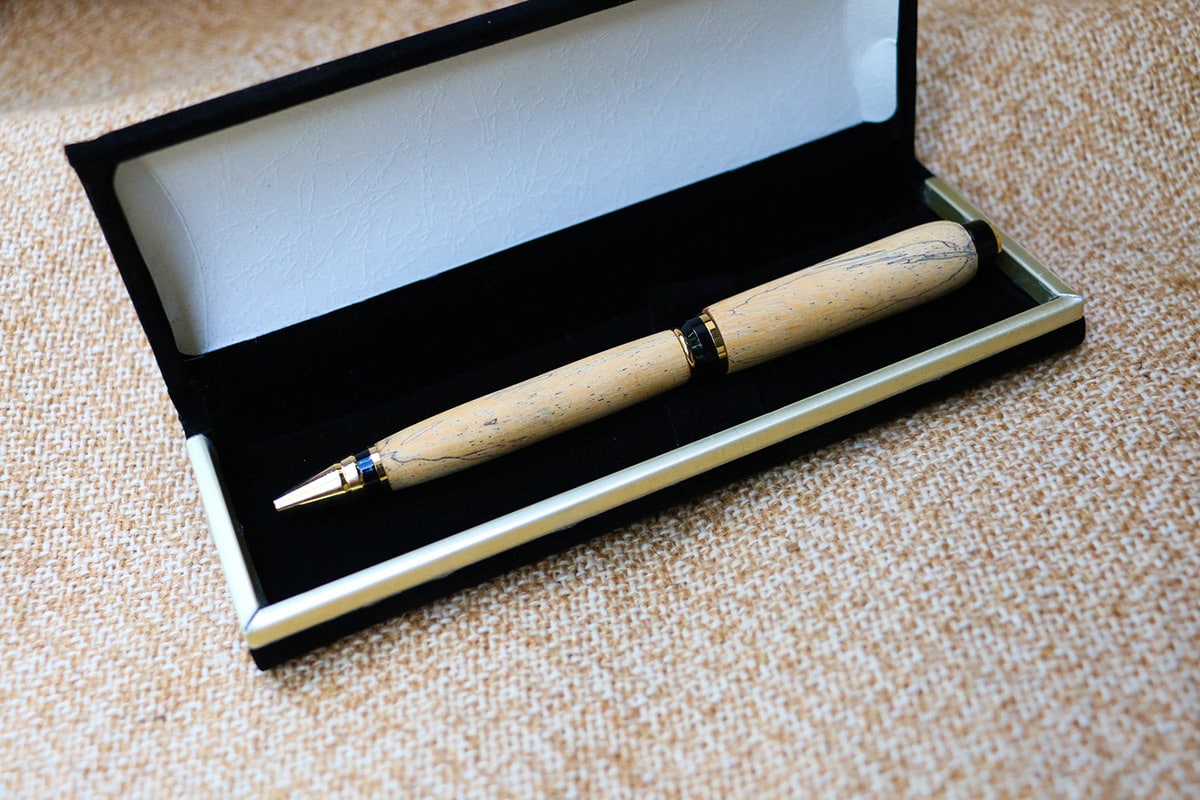
By Keisha Oliver.
Last summer, I had the pleasure of turning my first bowl from Madeira wood with established woodturner and furniture-maker, Robin B. Hardy. With no formal training, he has developed a niche for one-of-a-kind pieces hand-crafted from a variety of wood grown in The Bahamas.
Operating out of his basement workshop for the past seventeen years, Hardy’s design style is simple, functional and elegant, allowing the wood to express its own qualities and natural imperfections. His practice as a woodworker is inspired by curiosity and the challenge each piece of wood presents. He has coined his creative repertoire as “discovered art in salvaged wood.”

Robin Hardy turning a bowl in his workshop. Nassau, The Bahamas. (Photo by Keisha Oliver)
Keisha Oliver: For those that aren’t familiar with you, can you tell us about yourself and how long you have lived in The Bahamas
Robin Hardy: I was born in Lincolnshire, England, and moved to The Bahamas in 1952 with my mother and siblings. I attended Queen’s College; at the time the school was located downtown between Charlotte and Fredrick Street. I later attended a technical school for two years, before sitting the Senior Cambridge examinations. I started my career in accounting working with Cross & Thomas, a local accounting firm. I ended up in charge of the insurance agency they owned, when they sold it I went to work with Peter Cole & Associates and then Cole Albury Insurance Agency. Before I retired, I was the coordinator for The Bahamas Insurance Association. Currently, I live in Nassau where I spend most of my time in my workshop.

Robin Hardy turning a bowl in his workshop. Nassau, The Bahamas. (Photo by Keisha Oliver)
KO: How and when did you get started in woodturning? Is it a hobby or a career?
RH: Woodturning started off as a hobby in 2000. I signed up for a workshop in Pompano Beach, Florida, bought my first lathe and the journey began. I began turning pens and in 2007 I decided to venture into bowl turning. Yes, it started off as something I was interested in doing, but over the years it has grown into a skill that I’m able to earn from. It’s not a talent that someone can make a serious living from, but it helps.

Vessel made from madeira wood by Robin Hardy, 2017 (Photo by Keisha Oliver)
KO: Can you describe your process and what woodturning entails?
RH: My process begins with gathering the material that is often collected when people are getting rid of discarded trees that have been trimmed or fallen. When you first cut from a tree, the wood usually has a lot of moisture in it. As it dries the wood shrinks and changes shape. This is usually the longest part of the process. I then cut the piece into the general shape I want before mounting it on the lathe. The lathe is a machine for turning wood that is used along with carving tools to develop and refine the form. It takes anywhere between a day and a week to turn a bowl and 30 minutes to turn a pen.

Collection of pens made from a variety of wood types by Robin Hardy, 2017 (Photo by Keisha Oliver)
KO: Are there other woodturners producing work in The Bahamas?
RH: There may be a few woodturners, I don’t know all of them, but Roddie Pinder was known as the foremost woodturner in The Bahamas. In 1991, to mark the quincentennial celebrations, he was commissioned by The Bahamas Chamber of Commerce to produce an urn of native hardwood for the landfall of Christopher Columbus. I have a few pieces of Pinder’s work in my collection. I also own and currently use one of his original large lathes. There are a few wood turners in Abaco including Stephen Knowles, who specializes in bowl turning. In Nassau, Jeremy Delancy and David McGorrin are two wood turners I know very well and often share a booth with at local art and craft festivals.

Pen made from tamarind wood by Robin Hardy, 2017 (Photo by Keisha Oliver)
KO: What type of wood do you use? Do you have a favourite?
RH: I use over twenty-six different types of wood. Last year I exhibited at the Bahamas National Trust’s Christmas “Jollification” market. I had some pens crafted from local wood and some from salvaged wood. When people were told the difference they often reached for the local wood. They liked the idea that I was making use of something that ordinarily is discarded.
When I first started selling my work I would say the wood was native to The Bahamas. Then Eric Carey, Executive Director of the Bahamas National Trust (BNT) informed me that some of the trees were not in fact indigenous to The Bahamas. This was just before BNT started its nature reserve in Eleuthera, where they are preserving native trees. I have identified Madeira, Horseflesh, Wild Tamarind, Pigeon Plum, Ebony and West Indian Satinwood as the main local wood types. I don’t have a favourite, but my least favorite is Casuarina you can’t find it anywhere in my workshop. It is very unpredictable! It warps and cracks easily so you have to work it while it’s wet, because once it dries it’s concrete hard.
KO: Where can we find your work?
RH: My bowls and pens are available for purchase locally at The National Art Gallery of The Bahamas’ Mixed Media Shop, Doongalik Studios Gallery, The Craft Cottage, and Bahama Art and Handicraft. I also participate in Atlantis’ Art Walk at Marina Village, and BNT’s Jollification and Wine and Art events. My decor and furniture pieces have been displayed in several group art and craft exhibitions.

